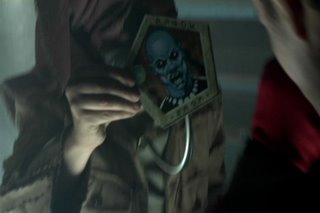Well, for some reason the picture of the hippo just isn't posting. Unless, of course, you see a hippo, in which case it did.
==========================================
"Seven Deadly Sins of Filmmaking For Profit" PART III
By Ted Chalmers
==========================================
=-=-=-=-=-=-=-=-=-=-
Sin #6:
RUNNING TIME
=-=-=-=-=-=-=-=-=-=-
Your film should be at around 90 minutes and not longer than 120
minutes. 90 minutes is the ideal because it is ideal for
programming a two hour movie slot with commercial breaks.
Features sell. Not shorts and not three shorts cut together to
make a 90 minute trilogy. They want one continuous story line
that is 90 minutes. Features generally range from 81 to 120
min.
However, in order to effectively use Sin #6 you've got to know
our last Sin...
=-=-=-=-=-=-=-=-=-=-
Sin #7:
LANGUAGE
=-=-=-=-=-=-=-=-=-=-
Most films that sell are in English. Even if you have a film
idea that merits another language you will be doing yourself
harm if you shoot in any language other than English. This
applies even if the territory traditional dubs into their own
language!
Ok, so LIFE IS BEAUTIFUL and AMELIE were hits and they were not
originally in the English language. How many non-English
films are actually produced every year? Well, I can tell you the
number is far higher than English language films. But, how
many of these films do YOU actually hear about beside Academy
Award(r)(tm) nominated films, or a few exceptional breakouts?
Hardly any. In fact, when I go overseas, I am amazed at how
many great movies are being made in other countries, but no one
wants to pick them up for U.S. or for International distribution
because they are too risky and have to have the hook of
cast, critical success or huge box office in their countries of
origin. These are rare exceptions, indeed .
So, there they are... The Seven Deadly Sins. The biggest thing
you have to be concerned about with your investors is whether
or not your film will get distribution. Without distribution,
no one will ever see your film and it will not make money.
Unfortunately, the gatekeepers to whether anyone buys a ticket
to your film are distributors. Distributors are ruled by
these sins for economic reasons. It is a buyers market and they
will pick and choose the films that have the best chance of
working for them. If they have a good track record with black
and white, romantic comedies, than you have a good chance. If
these kinds of films have generally done poorly for them (and
most have - fact, not opinion) then there is a chance they
won't even look at your movie at all! That can be disastrous
for you and your investors. Just something to think about.
Anyway, these "sins" should by no means be construed as
advice. I am just sharing with you what I have learned. I
think everyone should make the film that THEY truly believe in.
~~~~~~~~~~~~~~~~~~~~~~~~~~~~~~~~~~~~~~~~~~~~~~~~~~~~~
Raise Money for your movie with MoviePLAN Software!
Click NOW =====> http://www.movieplan.net
~~~~~~~~~~~~~~~~~~~~~~~~~~~~~~~~~~~~~~~~~~~~~~~~~~~~~








